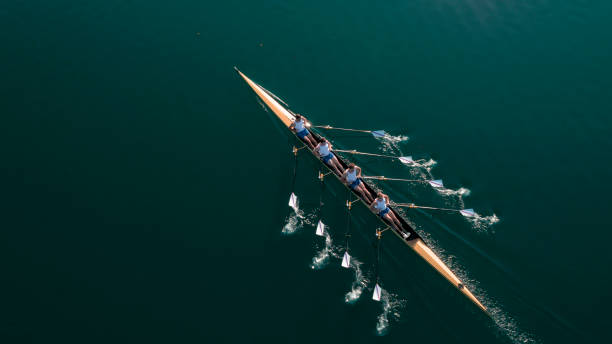Breaking Down the Art of Rowing: A Deep Dive into the Science and Evolution of this Ancient Sport
Rowing, an ancient sport with a rich history dating back thousands of years, is more than a simple act of propelling a boat by means of oars. It is a complex exercise of precision, strength, and endurance that requires a deep understanding of the sport's mechanics, techniques and history. This article aims to explore the fascinating world of rowing, its historical context, and its evolution into the modern sport we know today.

In the early ages, rowing was a vital mode of transport, a means of survival, and even a form of warfare. In ancient Egypt, for instance, rowing was a crucial part of royal ceremonies and military operations. Over time, it evolved into a competitive sport, with its first recorded race dating back to the 13th century in Venice, Italy. However, it wasn’t until the 19th century, with the establishment of rowing clubs in England and later the inclusion of rowing in the Olympic Games, that the sport gained widespread recognition and popularity.
Fast forward to today, and rowing has become a modern, high-tech sport with a unique blend of strength, endurance, and teamwork. Athletes train extensively, combining physical workouts with technical drills to achieve the perfect stroke - a harmonious blend of power and rhythm. They also utilize the latest technologies and sports science advancements to optimize their performance and minimize the risk of injury.
The benefits of rowing extend beyond the physical. It is a sport that fosters camaraderie, resilience, and mental toughness. The challenges faced by rowers - from grueling training sessions to high-pressure races - cultivate a mindset of perseverance and tenacity. Moreover, the reliance on synchronization and rhythm in team rowing events builds a strong sense of teamwork and mutual dependence.
Despite these benefits, rowing is not without its challenges. The intense physical demands of the sport can lead to a range of injuries, from minor strains to serious conditions such as rib stress fractures. Additionally, the need for specific equipment and bodies of water can make the sport less accessible to some.
In conclusion, rowing is a multifaceted sport that combines physical prowess, mental strength, and technical skill. Its roots date back to ancient times, yet it continues to evolve through advancements in sports science and technology. Whether as a competitive sport or a recreational activity, rowing offers a unique blend of challenges and rewards that make it a fascinating field of study. As we continue to delve into its intricacies and nuances, we can expect to uncover even more about this remarkable sport and the athletes it produces.





